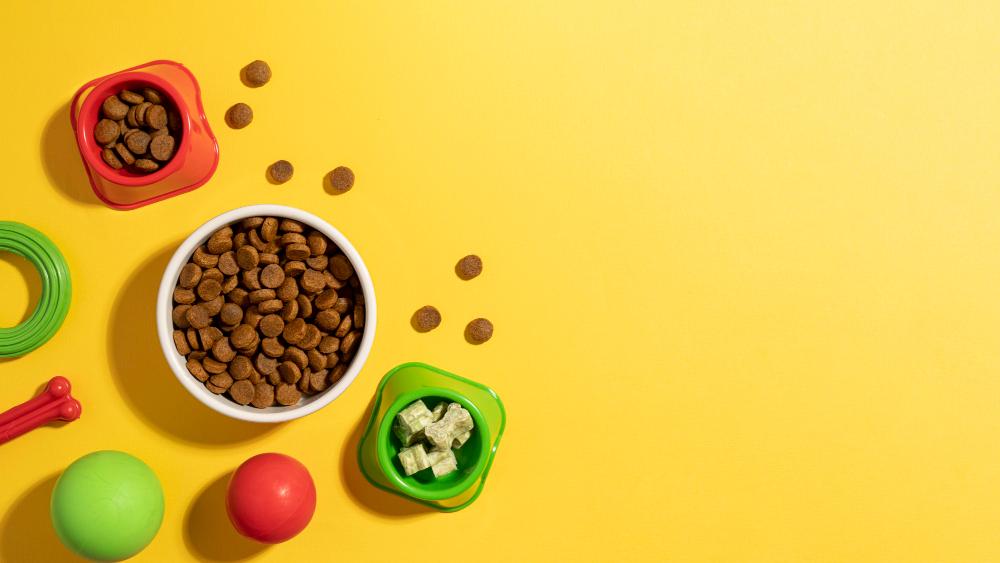As a pet owner, ensuring your pet’s well-being is a top priority. A balanced diet is necessary for pets to keep healthy, just like it is for humans. All pet feeds are not made equally, though. Some contain ingredients that, if consumed regularly, can be harmful to your pet’s health. Whether you are buying dog food or cat food, understanding what to avoid is crucial in maintaining your pet’s health and longevity. This blog will guide you through the nutrients you should avoid in pet food to ensure your furry friend remains happy and healthy.
Understanding Pet Food Labels
Before diving into specific nutrients, it’s important to understand how to read pet food labels. Pet food labels can be confusing, with a mix of scientific terms and marketing buzzwords. The first step in choosing the right food for your pet is to know what those ingredients mean and how they impact your pet’s health.
Ingredients are usually listed in order of weight, with the most prevalent ingredient listed first. Look for whole ingredients like chicken or beef as the first ingredient, rather than meat by-products or fillers. Also, be cautious of ingredients that are difficult to pronounce; they may indicate synthetic additives or preservatives.
Harmful Nutrients to Avoid
Artificial Preservatives
Artificial preservatives such as BHA, BHT, and ethoxyquin are commonly found in pet foods to extend shelf life. While these chemicals prevent food from spoiling, they can be harmful to your pet. BHA and BHT, for example, have been linked to cancer in laboratory animals, while ethoxyquin is believed to cause liver and kidney damage over time.
- What to Look For: Choose dog food and cat food that use natural preservatives like vitamin E (often listed as mixed tocopherols) and vitamin C (ascorbic acid) instead of synthetic options.
Artificial colors and flavors
Artificial colors and flavors may make pet food more appealing to you, but they offer no nutritional value to your pet. These additives are often used to mimic the appearance and taste of higher-quality ingredients but can cause allergies and behavioral issues in pets.
- What to Look For: Opt for products that do not contain artificial colors or flavors. Natural food colors like turmeric or beet juice are preferable if color is necessary.
Excessive Carbohydrates
While carbohydrates are a source of energy, excessive amounts in dog food or cat food can lead to obesity and other health issues. Pets, especially cats, are obligate carnivores, meaning their diet should primarily consist of protein, not carbs.
- What to Look For: Look for pet food with a higher protein content and lower carbohydrate levels. Avoid foods where grains like corn or wheat are listed as one of the first ingredients.
High Sodium Levels
High sodium levels in pet food can lead to hypertension and other cardiovascular issues in pets. While some sodium is necessary for maintaining fluid balance, too much can be dangerous.
- What to Look For: Select pet foods with balanced sodium levels and avoid those with excessive salt listed among the top ingredients.
Meat By-Products
Meat by-products are the parts of animals that are not considered meat, including organs, bones, and blood. While they may provide some nutritional value, they are generally lower in quality and can contain harmful contaminants.
- What to Look For: Choose pet food that lists specific meat sources, like chicken or beef, rather than vague terms like “meat by-products” or “animal digest.”
Corn and Wheat Gluten
Corn and wheat gluten are often used as cheap protein sources in pet food, but they are not as digestible or beneficial as animal proteins. They can also cause allergic reactions in some pets and contribute to digestive issues.
- What to Look For: Prefer pet food that lists real meat as the primary source of protein and avoid those that rely heavily on plant-based proteins like corn or wheat gluten.
Rendered Fat
Rendered fat is a generic term that can refer to fats derived from any type of animal, and its quality can vary greatly. This fat is often used to enhance the flavor of pet food but can also contain harmful toxins.
- What to Look For: Look for named fat sources like “chicken fat” or “beef fat” instead of generic terms like “animal fat” or “poultry fat.”
Excessive Fillers
Fillers such as soy, rice bran, and corn are added to pet food to bulk up the product, but they offer little to no nutritional value. They can also contribute to weight gain and digestive issues in pets.
- What to Look For: Opt for pet foods that contain whole, nutrient-dense ingredients rather than fillers. Ingredients like sweet potatoes or peas can be a better alternative as they provide beneficial nutrients.
Sugar and Sweeteners
Sugar, corn syrup, and other sweeteners are sometimes added to pet food to make it more palatable, but they can lead to obesity, diabetes, and dental issues.
- What to Look For: Choose pet food that does not list sugar or any sweeteners on the label, especially in the first few ingredients.
Toxic Ingredients
Some ingredients that are toxic to pets can still be found in certain pet foods. These include onions, garlic, and grapes, which can cause serious health problems if ingested.
- What to Look For: Always check the label for toxic ingredients and avoid any pet food that contains them. Consult your veterinarian if you’re unsure about certain ingredients.
Conclusion
For the general health and wellbeing of your pet, feeding them the proper diet is crucial. By avoiding harmful nutrients like artificial preservatives, excessive carbohydrates, and low-quality protein sources, you can ensure that your pet receives the best possible nutrition. Always read pet food labels carefully, and don’t hesitate to invest in high-quality dog food or cat food that supports your pet’s health for years to come.


